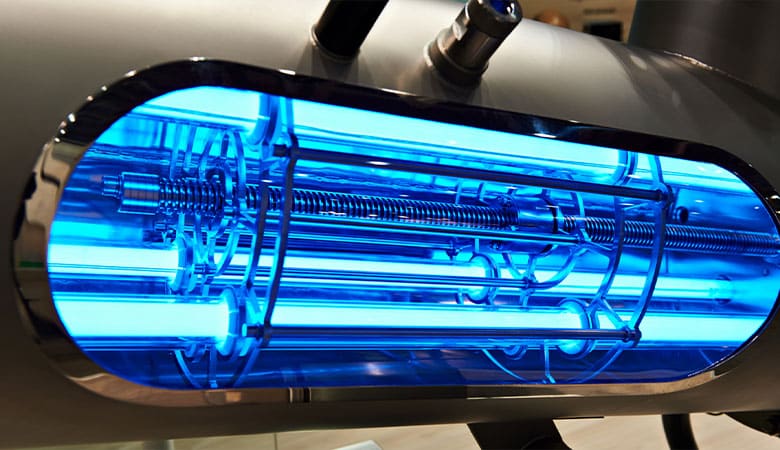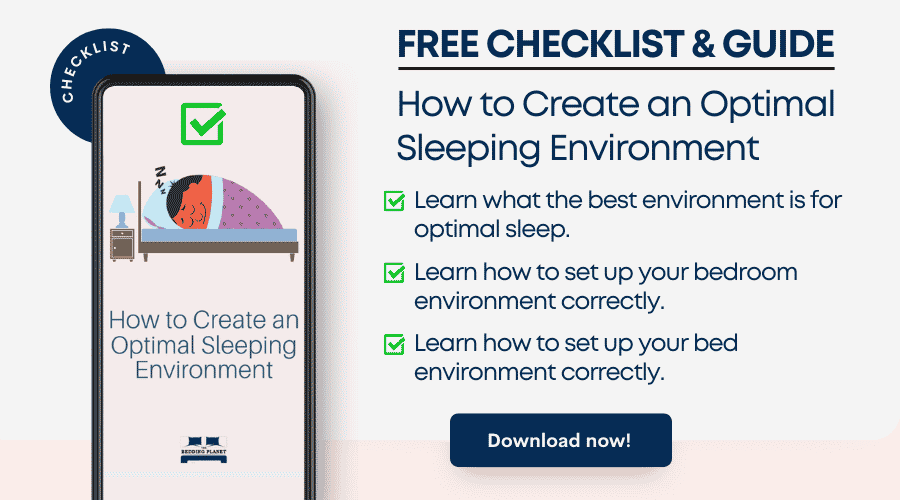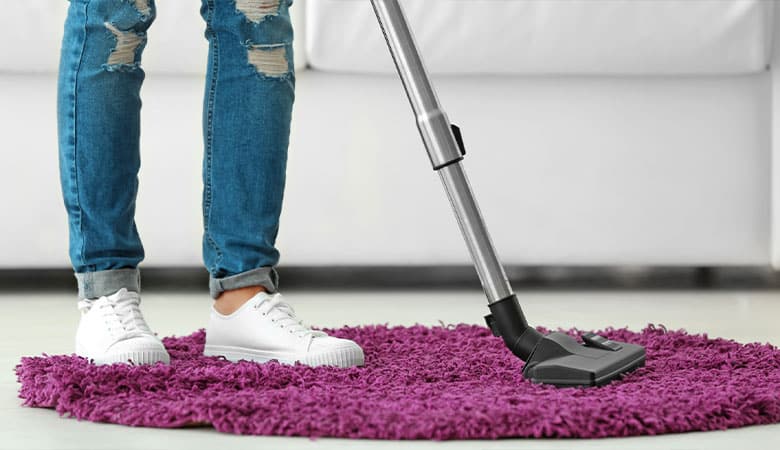Ultraviolet (UV) light is a specific spectrum of electromagnetic rays produced by the sun. UV light is also produced by electric arcs and specialized lights such as tanning lamps and black lights.
For humans, suntan and sunburn are familiar effects of exposure of the skin to UV light. The UV spectrum has effects that are beneficial and harmful to human life. What about dust mites?
Can UV light kill dust mites? UV light can kill dust mites, but the effectiveness depends upon the strength of the light and the amount of time the microorganism is exposed to it.
Dust mites are microscopic (.25 to .33 mm) arachnids (eight-legged insects) that feed off dead skin and other things like pet hair. They like to live in temperatures of 68 to 77 degrees Fahrenheit with humidity levels of about 70 – 80 percent. Your bed is a top breeding ground for dust mites.
They also live in carpets and rugs. Dust mites do not bite and you cannot feel them crawling on your skin. Since they are not visible to the naked eye, you may not know they exist. But dust mites exist if you sleep on a bed.
Dust mites can also be harmful to those who suffer from allergies and experience asthma, dermatitis and other reactions when exposed to them.
The average mattress can hold anywhere from 200,000 to 10 million dust mites. Yikes! That’s a lot of dust mites, whether you can see them or not. The average pillow can double in weight due to the amount of dust mite droppings on your pillow.
With numbers like that, it’s important to know the best ways to get rid of dust mites. To reduce allergy symptoms, you must remove the dead dust mites and associated debris from your home. UV light has proven to be a good source for killing dust mites to reduce allergies, and providing a clean and sanitary environment in your home.
Types of UV Light

UV light has been used for many years in sterilization of medical instruments and in water purification systems. UV light can kill bacteria, viruses, germs, dust mite eggs, dust mites, molds, etc., but the effectiveness depends on the strength of the light and the amount of time the microorganism is exposed to it.
Other factors to consider are if different microbes have different levels of resistance to the light, so the same length of exposure does not work the same on all organisms.
There are three types of UV light to include UV-A, UV-B, and UV-C. In natural sunlight, UV-A is the predominant component. It is associated with tanning and is used to treat certain forms of skin diseases. UV-B is known for contributing to skin cancer due to over exposure.
UV-C has a wavelength of 253.7 nanometers (nm) and is used for germicidal irradiation. UV-C has been instrumental in killing microorganisms like bacteria, viruses, and dust mites.

How Much Strength of UV-C Light is Needed?
The closer the UV light is to the organism, the more effective it is. As distance increases and exposure duration decreases, the mortality rate drops.
While the efficiency of UV-C in killing dust mites is highly dependent on the intensity and duration of exposure, UV-C is highly effective in preventing dust mite eggs from hatching. This is because the UV-C penetrates the cells of dust mite eggs and impair the hatching process.
How Much Exposure Time Is Needed?

It may take anywhere from 5 minutes up to an hour to kill adult dust mites. Fresh eggs of dust mites take about 5 minutes to die when irradiated at 10-55 cm distance.
Different Ways to Use UV-C Light
There are at least three different ways to consider using UV light for killing dust mites:
- UV-C Sanitizer – This is a portable wand that allows you to disinfect surfaces with a built-in light bulb. For effectiveness, make sure to hold the wand as close to the surface to be cleaned as possible, with the lamp facing down. Move the wand across the surface you are cleaning slowly and evenly, without touching it. Be sure to keep the wand level while you are using it. Repeat the process as often as you think is necessary. It’s recommended to wear safety goggles when using to protect against UV radiation.
- UV Vacuum Cleaner – There are UV vacuum cleaners that are specifically designed to kill dust mites. Make sure to choose one that has a high-efficiency particular air (HEPA) filter. A HEPA filter traps 99.97% of the particles. Without the HEPA filter, the mites can enter the air again. You also want the cleaner to have a high suction force. Powerful suction will make it easier to clean mattresses, and will make it easier to remove almost all the mites with a single pass.
- Air Purifier with UV Light – The air purifier helps to remove dust mites that are floating in the air. Once the dust mites are trapped in the filter, they will eventually die because they will be exposed to the UV light for a long period of time.
The Risk of UV-C Light to Humans
Exposure to high-intensity UV-C can cause skin irritation, severe burns of the skin, redness, and eye injuries. When choosing to use UV light to kill dust mites, avoid direct contact with the skin.
Skin burns and eye injuries usually resolve within a week with no long-term damage. The risk of cancer is very low. The type of eye injury associated with exposure to UV-C causes severe pain and feeling of having sand in the eyes.
This may lead to discomfort in the eye with limited usability for a day or two. There is little to no risk of cataracts or permanent vision loss.
Other Ways to Kill Dust Mites

While it may be hard to kill dust mites outside of UV light, there are some ways to reduce the amount of dust mites in your home.
The number one way is to do routine cleaning throughout your home. Vacuuming the floors and dusting at least twice a week, vacuuming mattresses, and washing bed linens and pillows, are all ways of reducing dust mites.
Dust mites thrive in warm and humid conditions. If possible, keep your room temperature below 70 degrees.
Conclusion
While UV-C is helpful in killing dust mites, please be mindful that it’s important to use any product that has UV-light safely. Remember to wear appropriate protective gear. For dust mites control, nothing beats regular cleaning of your home.


